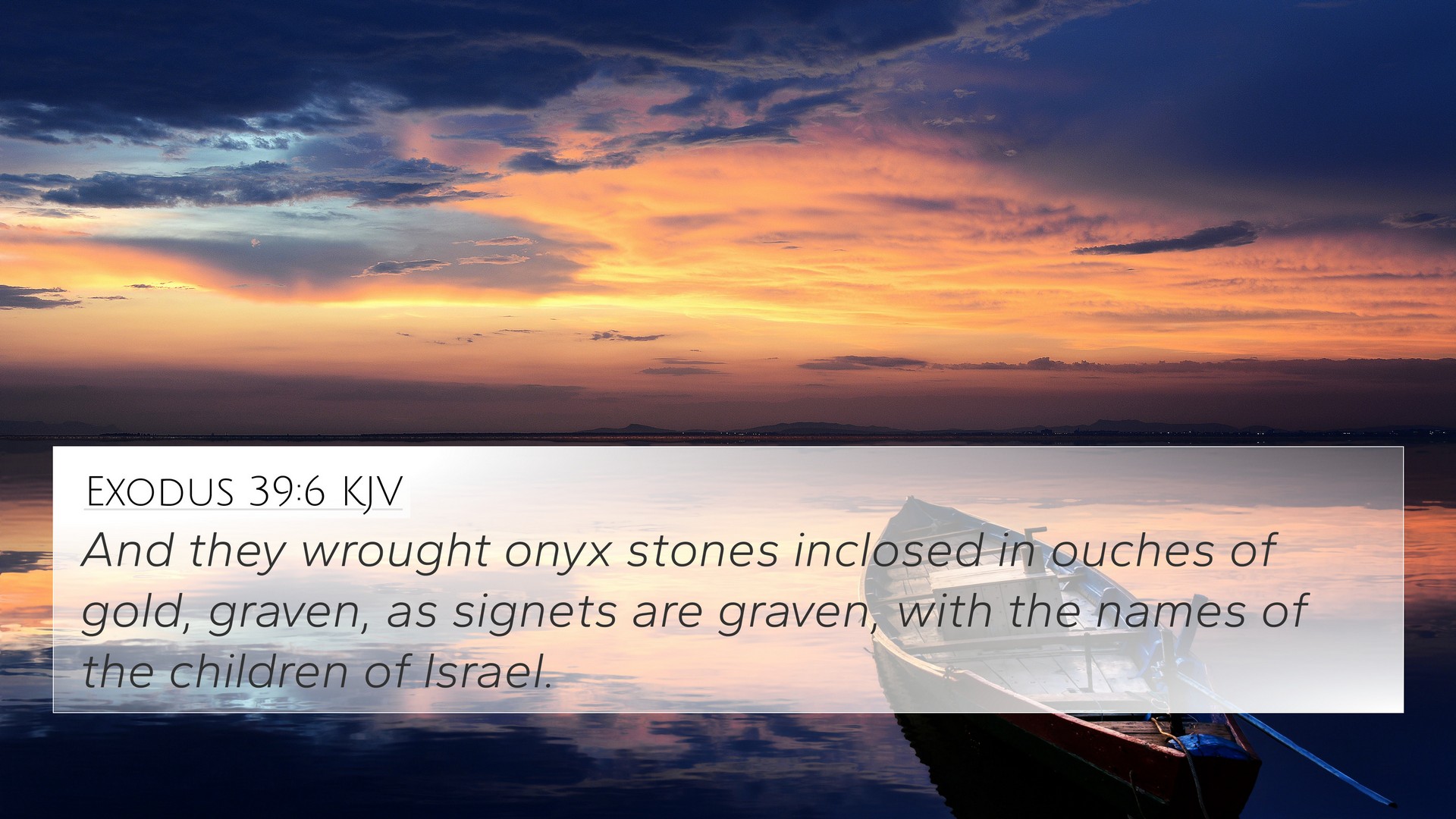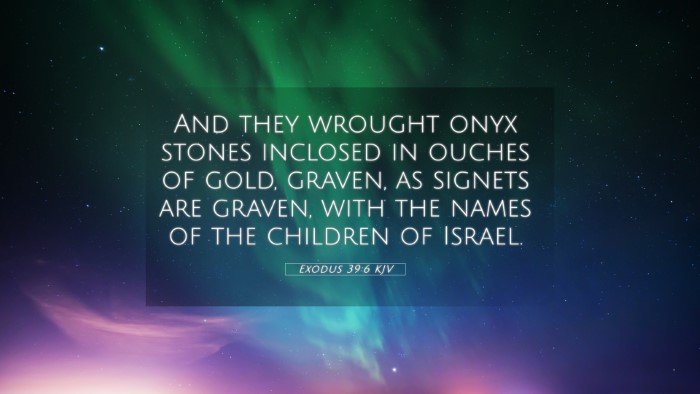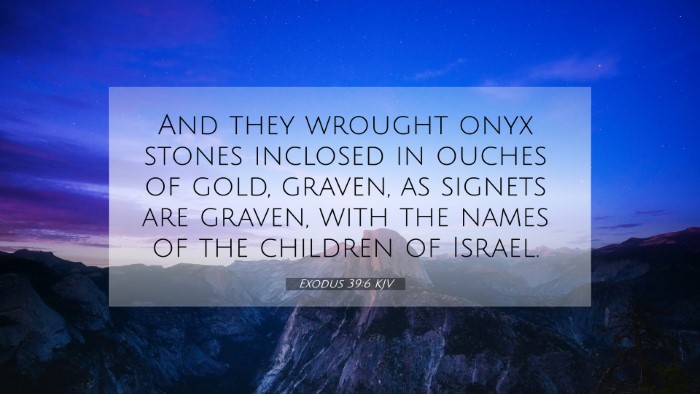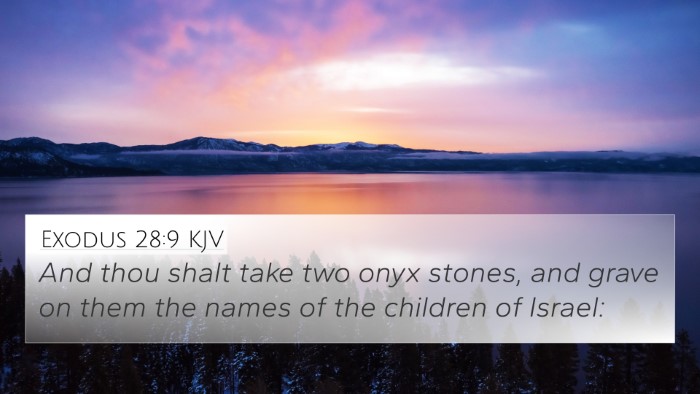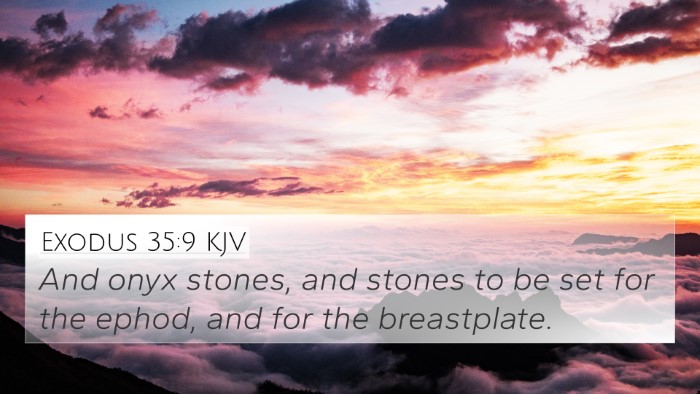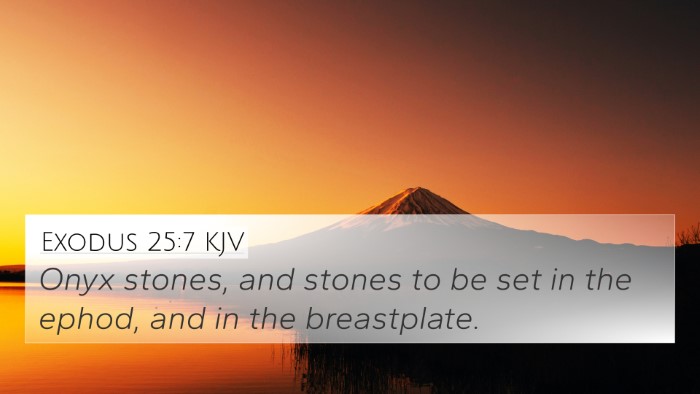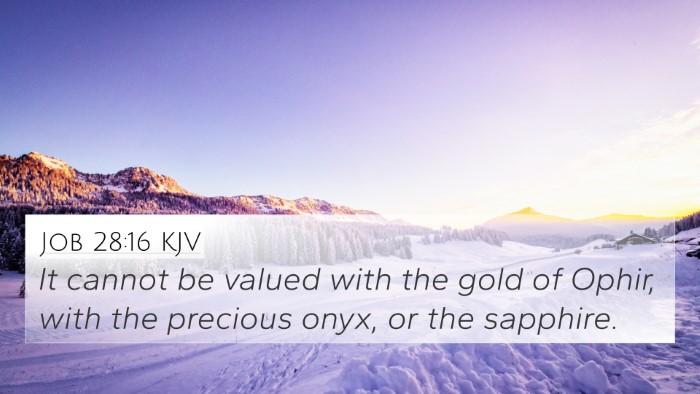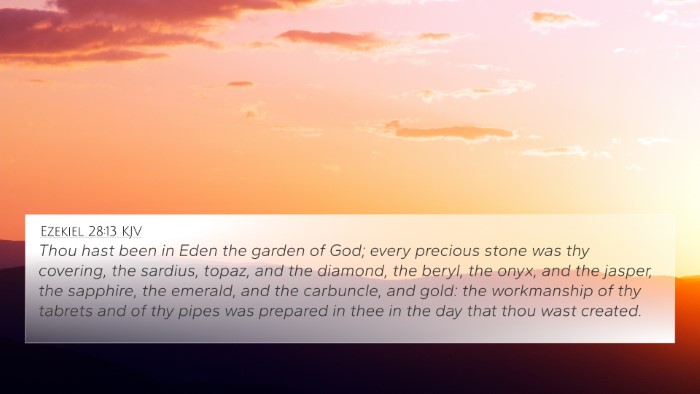Understanding Exodus 39:6
Verse: Exodus 39:6 (KJV) - "And they made onyx stones enclosed in ouches of gold, graven, as signets are graven, with the names of the children of Israel."
The significance of this verse lies in its connection to the High Priest's attire and the symbolic representation of Israel before God. In the study of Exodus 39:6, we can draw insights from various public domain commentaries. Here is a summary of those interpretations along with relevant cross-references.
Meaning and Significance
Exodus 39:6 describes the craftsmanship involved in creating the onyx stones that were designated to bear the names of the tribes of Israel. These stones were not merely decorative but held profound theological implications, representing the unity and identity of God's people before Him.
The stones were set in gold, indicating their preciousness and the honor conferred upon the tribes of Israel. The act of engraving their names on these stones symbolizes God's remembrance of His covenant with Israel.
Insights from Commentaries
Matthew Henry
Henry emphasizes the importance of representation; that the High Priest bore the names of Israel on his heart (Exodus 28:12), indicating that he carried their burdens and interceded for them before God.
Albert Barnes
Barnes highlights the meticulous detail in the construction of the High Priest's garments, showing that God values proper worship and representation. The onyx stones signify the permanence of God's covenant and His promise to provide for His people.
Adam Clarke
Clarke comments on the symbolism of the stones, noting that their being engraved as signets reflects the significance of the priests’ role in mediating between God and Israel. He also underlines the notion of identity in covenant theology.
Cross-Referencing Biblical Texts
In understanding Exodus 39:6 further, we can identify multiple related verses that provide deeper insight into the themes of representation, covenant, and priesthood. Here are some relevant cross-references:
- Exodus 28:9-12: Discusses the breastplate of judgment, where the names of the tribes are engraved.
- Leviticus 8:7-9: Describes the consecration of Aaron, symbolizing his role as the High Priest.
- Deuteronomy 9:14: Highlights God's promise to prevent Israel's names from being blotted out.
- Isaiah 49:16: God states He has inscribed His people on the palms of His hands, showcasing His utmost care.
- Revelation 21:14: Mentions the names of the twelve tribes of Israel being written on the foundations of the New Jerusalem.
- 1 Peter 2:9: Explains that believers are a chosen generation, drawing parallels to Israel as a treasured possession.
- Hebrews 3:1: Calls believers to consider Jesus as the High Priest, connecting New Testament themes with Old Testament priesthood.
Thematic Connections
The themes of identity, representation, and covenant found in Exodus 39:6 echo throughout both the Old and New Testaments. The intertextual dialogue highlights how the physical representation in the Old Testament shifts to a spiritual one in the New Testament, where all believers are seen as a royal priesthood (1 Peter 2:9).
Conclusion
Understanding Exodus 39:6 requires a comprehensive approach that involves cross-referencing and thematic analysis. By examining how this verse connects with others, we uncover the deeper significance of God’s relationship with His people, both historically and in contemporary faith practice.
How to Use Cross-References
Utilizing tools for Bible cross-referencing, such as a Bible concordance or a cross-reference guide, can enhance your study. Consider the following methods:
- Identifying connections: Look for thematic links across different books of the Bible.
- Comparative studies: Analyze how different authors address similar themes such as covenant, identity, and priesthood.
- Contextual analysis: Explore the cultural and historical context surrounding key verses.
- Connecting Old and New Testament themes: Reflect on how God's promises in the Old Testament are fulfilled in the New Testament.
